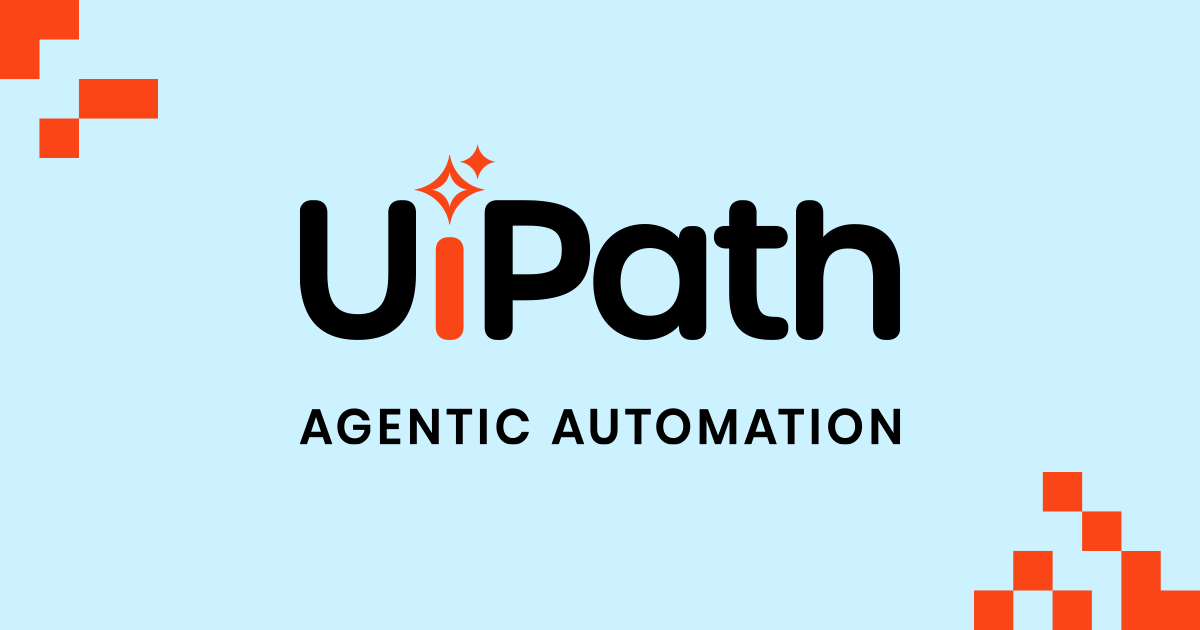Key Takeaways
What is UiPath? UiPath Business Automation Platform combines robotic process automation (RPA) with agentic AI to help enterprises automate complex business processes across systems while maintaining governance and security controls.
- 🤖 Unique combination of controlled AI agency with RPA allows both autonomous execution and human oversight in complex processes
- 🔄 Maestro orchestration enables coordinated workflows across different systems regardless of which platform or AI model they use
- 📄 AI-powered Document Understanding dramatically improves unstructured data processing from ~80% to 92%+ success rates
- 🏢 Enterprise-grade security and compliance features make it suitable for highly regulated industries
- 💲 Premium pricing structure may be cost-prohibitive for smaller organizations
- ⚙️ Proven scalability from 5 to 500+ robots, though complexity increases at enterprise scale
This review covers: features, integrations, customization, hosting, pricing, pros and cons, and real-world use cases.
Use Cases
💡 Finance and Accounting Extract data from invoices (including unstructured formats), generate financial reports from multiple sources, and manage accounts receivable/payable processes automatically
🏥 Healthcare Automate patient data management across systems, process insurance claims efficiently, and handle appointment scheduling with integration to multiple calendaring systems
🛡️ Insurance Streamline policy administration, automate the full claims lifecycle from intake to payment, and perform risk assessment by collecting data from multiple sources
👥 Human Resources Accelerate employee onboarding with automated document collection and access provisioning, process payroll accurately, and simplify benefits administration
🚚 Supply Chain Management Automate order processing from receipt to fulfillment, maintain optimal inventory levels with intelligent reordering, and coordinate shipping logistics documentation and tracking
User Experience and Ease of Use
🖱️ How intuitive is the interface? UiPath delivers a visual, drag-and-drop workflow designer that presents automation steps in a flowchart format, making it accessible to users with various technical backgrounds while still supporting custom code integration in VB.NET and C# for more complex needs.
🔄 What about common tasks? Pre-built activity packages accelerate development by providing ready-made components for Excel operations, email tasks, and web interactions, reducing the learning curve for new users.
🎬 Is there a recording option? For beginners, UiPath offers a recording feature that captures user actions and converts them into automation steps—particularly helpful for quickly automating simple tasks or learning how the platform structures automation sequences.
👨💼 Who can use it effectively? Organizations typically find that business users can handle simple automations independently, while more complex workflows may require IT involvement or dedicated RPA developers. The extensive UiPath Academy training resources help users progressively build their skills.
Automation Capabilities
⚙️ What basic tasks can be automated? UiPath excels at automating repetitive processes across applications, including desktop application interaction, web browser automation, data entry/extraction, file manipulation, and email processing.
- 🧠 Decision modeling: Create conditional logic and business rules
- 🛠️ Exception handling: Build error detection and recovery mechanisms
- 📋 Queue management: Process work items in organized pipelines
- ⚡ Parallel processing: Run multiple tasks simultaneously
- 🔄 State machines: Design complex workflows with multiple possible states
🤖 How does AI extend capabilities? UiPath’s AI features significantly enhance automation potential through Document Understanding for processing structured/unstructured documents, Computer Vision for interacting with on-screen elements, Natural Language Processing for extracting meaning from text, and Machine Learning integration for predictive capabilities.
🧩 What about the Agent Builder? One of UiPath’s newest innovations provides a unified tool for building, testing, and deploying AI agents with support for both low-code and professional developers, offering natural language agent creation and pre-built templates.
Integration Options
🔌 What systems can UiPath connect with? The platform offers extensive native integration with common business tools including Microsoft 365, Salesforce, SAP, ServiceNow, Citrix Workspace, and various financial systems.
- 🖥️ UI automation: Interacts with application interfaces as a human would
- 🔄 API connectors: Provides direct integration through application programming interfaces
- 💾 Database connections: Reads from and writes to various database systems
- 🌐 Web services: Communicates through REST, SOAP, and other protocols
- 📄 File-based integration: Processes data from CSV, Excel, PDF, and other formats
⚠️ Are there integration limitations? While integration capabilities are extensive, the depth of integration can vary by application. Some systems have deeper, more feature-rich integration options, while others may require more basic approaches. Changes to target applications occasionally require updates to automations.
Scalability and Deployment
☁️ What deployment options exist? UiPath provides flexible options including cloud (UiPath Automation Cloud), on-premises, and hybrid deployments to accommodate different security, compliance, and operational needs.
📈 How well does it scale? The platform offers robust scalability through centralized orchestration, robot farms for high-volume processing, multi-tenancy for different departments, and environment promotion workflows. Customer examples show successful scaling from 5 robots to 500 within 18 months.
⚠️ What are scaling considerations? When expanding automation programs, organizations should carefully plan for licensing costs, infrastructure requirements (particularly for on-premises deployments), and management overhead to maintain performance and reliability.
Error Handling, Monitoring, and Reporting
🛡️ How does UiPath handle errors? The platform provides multi-layered error handling with try/catch mechanisms, retry logic, transaction handling, global exception handlers, and custom error levels to create resilient automations.
- 📊 Monitoring capabilities include:
- Centralized dashboards for comprehensive visibility
- Real-time status tracking of robots and processes
- Queue monitoring for work items
- Resource utilization measurements
- Detailed execution logs
📝 What about reporting? UiPath delivers both operational and business-focused insights including success/failure metrics, duration analytics, volume reporting, business impact calculations, compliance documentation, and custom report creation.
💡 Real-world impact: One insurance company reduced exception rates from 22% to under 8% by implementing proper error handling and monitoring, while another organization documented over 900,000 hours saved through automation.
Security and Compliance Features
🔐 How does UiPath protect sensitive data? Access control is implemented through a robust role-based system with user role definitions, resource-level permissions, organizational hierarchy support, single sign-on integration, and multi-factor authentication.
🛡️ What data protection measures exist? The platform includes credential vaulting for secure password management, data encryption both in transit and at rest, masked data handling for sensitive information, and secure asset management.
- 📝 Audit and compliance features:
- Comprehensive audit logs recording all system activities
- Change tracking for modifications to automations
- Version control for process definitions
- Support for SOC 2, GDPR, HIPAA, and other regulations
- Segregation of duties enforcement
⚠️ Important consideration: While UiPath provides robust security capabilities, proper configuration remains essential. Organizations should establish clear security policies, implement least-privilege access principles, and regularly review automation security.
Support, Documentation, and Training Resources
🆘 What support options are available? UiPath offers tiered support services from standard assistance to enterprise support with faster response times, dedicated technical account managers, and strategic guidance from customer success managers.
📚 How comprehensive is the documentation? The platform provides thorough documentation covering everything from basic concepts to advanced techniques, including detailed product guides, API references, best practice resources, release notes, and industry-specific implementation guidance.
🎓 What training is offered? UiPath Academy delivers extensive education through role-based learning paths, certification programs, self-paced courses, hands-on exercises, and continuous education as new features are released.
💡 Practical advice: Organizations should allocate time for team members to complete relevant Academy courses, as this investment typically results in more effective automation development and fewer support issues.
Pricing and Licensing
💰 How is UiPath licensed? The platform uses a tiered model based on robot licenses (attended or unattended), Orchestrator capacity, feature modules like Document Understanding, user access licenses, and deployment model (cloud vs. on-premises).
🏢 What options exist for different organization sizes? UiPath offers several licensing tiers from the free Community Edition (with limitations) to Team, Enterprise, and custom enterprise agreements for large-scale deployments.
⚠️ Cost considerations: Reviews indicate that while UiPath’s licensing costs are significant, positive ROI is often achieved through efficiency gains and cost reductions. Discounts averaging around 13% may be available for larger purchases or strategic deployments.
💡 Evaluation factors: When assessing costs, organizations should consider total automation potential, implementation expenses beyond licensing, time-to-value, scalability costs, and alternative approaches for specific use cases.
Product Updates and Roadmap
🔄 How often is UiPath updated? The platform maintains a consistent update cadence with major releases on a predictable schedule and smaller updates between versions, balancing new capabilities with stability for production environments.
🚀 What innovation areas is UiPath focusing on? Recent evolution has concentrated on AI integration, agentic automation with autonomous AI agents, improved low-code experiences, enhanced cloud capabilities, stronger governance features, and better process discovery tools.
🔍 What are the most significant recent innovations? The Agent Builder provides a unified environment for creating and deploying AI agents, while Maestro enables ecosystem-agnostic orchestration of multiple agents and robots regardless of which platform or AI models they use.
⚠️ Update consideration: While regular updates deliver valuable new capabilities, organizations should maintain proper change management processes to test updates before applying them to production environments to avoid compatibility issues with existing automations.
Summary
- 🔑 UiPath uniquely combines RPA with AI agents for autonomous execution within governed enterprise workflows
- ⚙️ Excellent for automating complex cross-system processes in finance, healthcare, insurance, HR, and supply chain
- 💡 Document Understanding with AI dramatically improves unstructured data processing success rates (92%+)
- ✅ Comprehensive security, governance, and compliance features make it suitable for regulated industries
- ❌ Premium pricing may be prohibitive for smaller organizations despite potential ROI benefits
- ✅ Intuitive visual workflow designer accessible to both technical and business users
- ✅ Robust AI capabilities including document processing, computer vision, and NLP
- ✅ Comprehensive integration options for connecting diverse business systems
- ✅ Enterprise-grade security and compliance features
- ✅ Extensive training through UiPath Academy makes adoption easier
- ✅ Strong orchestration through Maestro for coordinating complex workflows
- ❌ Significant licensing costs that may challenge smaller organizations
- ❌ Complex implementations require technical expertise despite low-code options
- ❌ Updates occasionally introduce compatibility issues with existing automations
- ❌ Advanced features require separate module licensing beyond base platform
- ❌ Steeper learning curve for utilizing the platform’s full capabilities
Frequently Asked Questions
What is the difference between attended and unattended automation in UiPath?
Attended automation works alongside human users, helping them complete tasks while they remain at their computer. These robots are typically triggered by user actions and assist with specific portions of a process. Unattended automation runs independently without human intervention, often on virtual machines or servers, and can operate 24/7 on scheduled or triggered processes. UiPath supports both types, with different licensing models for each.
Does UiPath require programming knowledge to use effectively?
UiPath accommodates users with varying technical backgrounds. The platform’s Studio environment offers drag-and-drop functionality and recorders that allow non-programmers to create simple to moderate automations. However, advanced workflows, complex exception handling, and custom integration scenarios benefit from programming knowledge. UiPath supports both visual development and code-based approaches using languages like VB.NET or C#.
How does UiPath handle document processing for unstructured data?
UiPath’s Document Understanding capability combines OCR (Optical Character Recognition), machine learning, and AI to process both structured and unstructured documents. The system can identify document types, extract relevant information, and validate data against business rules. For unstructured content, it uses AI models to understand context and locate important information even when documents don’t follow a standard format. Success rates typically exceed 90% with proper implementation and training.
What security measures does UiPath implement to protect sensitive data?
UiPath incorporates multiple security layers, including role-based access controls, credential vaulting for secure password management, data encryption both in transit and at rest, audit logging of all system activities, and support for enterprise authentication standards like SAML and OAuth. The platform complies with SOC 2, GDPR, HIPAA, and other regulatory frameworks. Organizations can implement additional security measures such as segregation of duties and approval workflows for sensitive processes.
How does UiPath’s licensing model work?
UiPath licenses several components separately: robots (both attended and unattended), Orchestrator capacity, development seats, and additional modules like Document Understanding or Process Mining. Pricing typically scales with the number of robots deployed and the specific features required. UiPath offers different tiers including Community Edition (free with limitations), Team, Enterprise, and custom enterprise agreements. While exact pricing requires direct consultation, organizations typically find positive ROI despite significant licensing costs due to the efficiency gains achieved.
Can UiPath automate applications that don’t have APIs or accessible interfaces?
Yes, UiPath specializes in automating applications regardless of their integration capabilities. The platform can work with legacy systems, desktop applications, web interfaces, terminal emulators, and virtual environments like Citrix. It uses multiple automation approaches including UI automation (interacting with interface elements), image-based automation (recognizing screen elements visually), and text-based automation. For particularly challenging applications, UiPath’s computer vision capabilities can identify and interact with screen elements that traditional automation methods might struggle with.
What is UiPath’s approach to AI and machine learning in automation?
UiPath incorporates AI throughout its platform, offering both pre-built AI capabilities and the ability to integrate custom AI models. The platform includes document understanding (intelligent extraction from various document types), computer vision (visual recognition of screen elements), natural language processing (understanding text content), and machine learning for prediction and classification tasks. The newer Agentic Automation capabilities allow AI agents to autonomously execute complex business processes within governed workflows. Organizations can leverage these capabilities without deep AI expertise or develop more advanced custom AI components as needed.
Ready to try UiPath? Visit the official site



